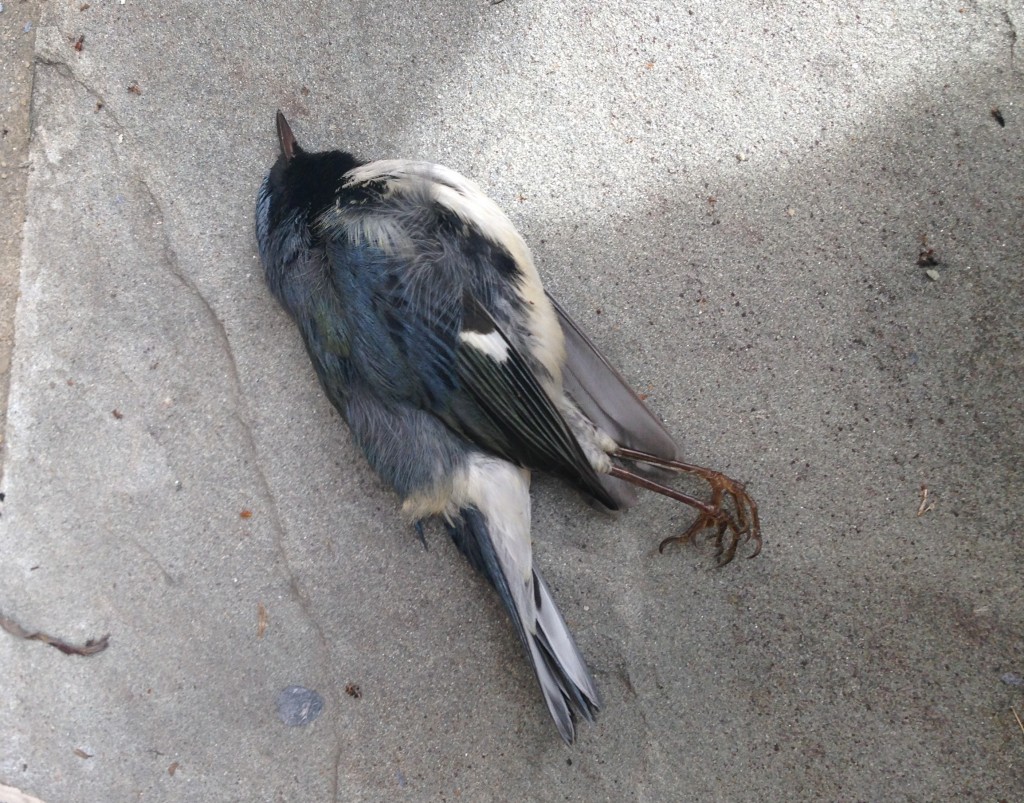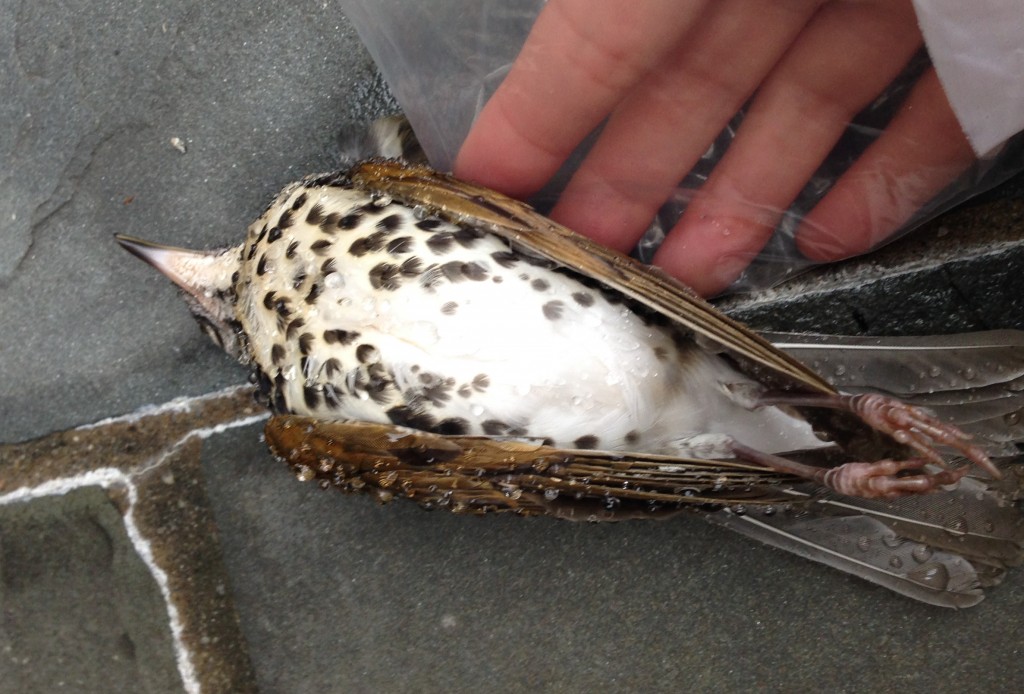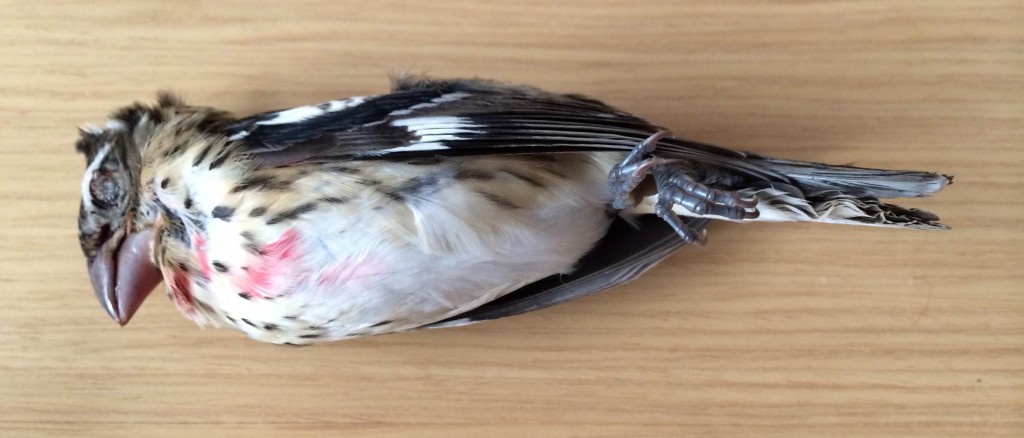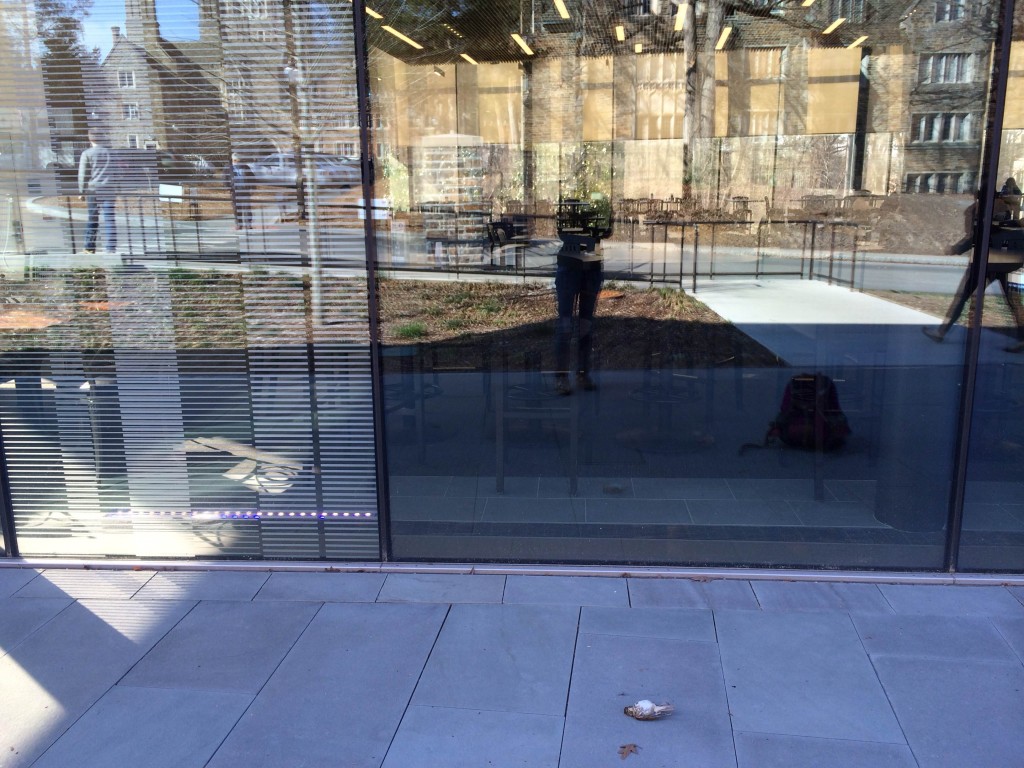The semester is coming to an end, Thanksgiving is upon us, and we can already feel the chills of the winter season, and the warmth of family gatherings and hot cocoa.
Although the news coming in this post are not good, they intend to call attention to an important issue which has been largely ignored, and evidence the importance of gathering information to inform decision making. In 2011 Jeff Pippen started getting random collision reports from people at Duke, he was the go-to person when dealing with any bird issues. During that year, the first to have any records of collisions at Duke, 4 collisions were reported, of 3 different species. 2012 got 13 collisions of 5 species, and 2013 11 collisions belonging to 10 species. At this point we thought collisions were getting underestimated and decided to start monitoring them more closely. Natalia Ocampo-Penuela, later joined by Nicolette Cagle, took the lead in starting scientific research and raising public awareness about bird collisions on campus.
In 2014 we started our standardized surveys during Spring and Fall migration, and encouraged students, staff, and faculty all over campus to report their collision events. The results were amazing (and not very positive). During the Spring survey we found a total of 41 collisions in 6 buildings around campus, while the Fall survey yielded 45 collisions, so 86 collisions were reported in 42 days of the year. The rest of the collision reports for 2014 have come from our project collaborators everywhere on campus (Thanks guys!).
2014 has been a deadly year for birds at Duke, a total of 159 collisions occurred with a 98% death rate, so not many birds survived. From 2011 to 2014, 187 collisions have been recorded. Cedar Waxwing, American Goldfinch, Gray Catbird, and Ruby-throated Hummingbird hold the highest bird deaths, and the engineering building, CIEMAS, accounts for 60% of all the collisions that have taken place at Duke University.
Isn’t it time we started doing something about this?












